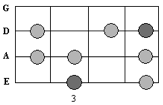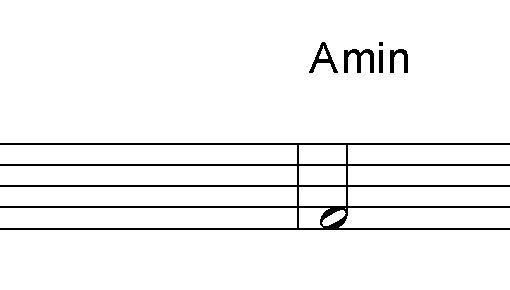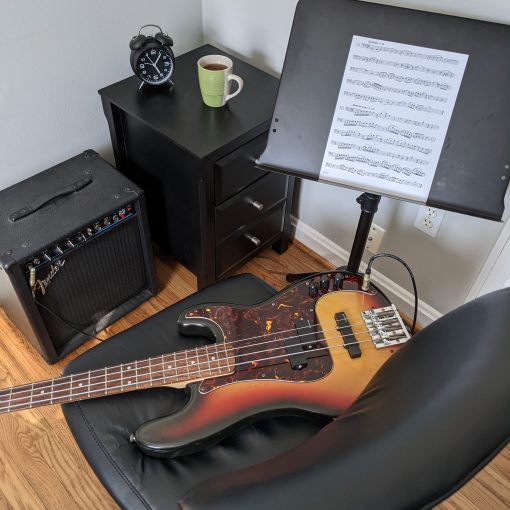Level: beginner
No part of this lesson may be copied, reproduced, or distributed in any form without consent of the author. Copyright © Doug Ross, all rights reserved.
If you’ve been learning bass casually, you have probably picked up some basic information, such as fingerings for the major and minor scales, maybe a pentatonic pattern or two, perhaps some simple chord fingerings such as major and minor triads. This is all very useful information, but without going through a formal music theory course, most bassists find it difficult to tie it all together and really understand chord progressions. Here’s a quick primer to get you started.
The heart of all music theory is the major scale (do-re-mi-fa-so-la-ti-do). In case you haven’t learned it already, here’s the fingering on bass:

All melodic and harmonic elements in music are described in terms of their relationships to this scale. Wherever you play a major scale on the bass, you are establishing a key based on the root of that scale. The above example is in the key of G, which looks like this written in bass clef:

Note that all F’s in the key of G will be sharp (F#), because our major scale fingering produces an F# on the seventh tone.
Every song is in a key (yes, sometimes songs do change keys, but let’s keep it simple for now), so melodies will mostly stay within a given major scale, and thus need to be harmonized with chords derived from the same scale. These are called diatonic chords, and we can easily create a diatonic chord by starting on any given note of the scale and stacking every other note up the scale from there:

Since we are skipping notes in this way, all chords for now will be stacked either “line-line-line” or “space-space-space” in the bass clef. They look like little hamburgers! The above example shows all seven diatonic triads (three-note chords) in the key of G, one chord built up from each degree of the scale. Try playing each chord note-by-note from the bottom up. Don’t forget that all the F’s are sharp in this key! We refer to the bottom note of each chord as the root, the middle note as the 3rd, and the top note as the 5th. Playing chords one note at a time in this way is called arpeggiating the chords (as opposed to strumming the notes together).
We can stack up more than three notes from each root. In fact, we could have up to seven notes for complex chords, but three and four note chords are most common. Here is the same harmonized scale built in four-note chords (also referred to as “seventh chords” because they are stacked root-3rd-5th-7th):

You can, and should, spend a lot of time absorbing this information. You will use it constantly when analyzing, performing, and writing songs. I recommend that you first commit the order of the diatonic chords to memory (i.e. the first chord is a Major 7 chord, second chord is minor 7, third chord is minor 7, etc.). Then you should go through the exercise of writing out and harmonizing all other major scales in the same way. Every key should result in the same order of chord types (Maj7, min7, min7, Maj7, dom7, min7, min7b5) if you’ve harmonized them correctly. And finally, you need to practice arpeggiating these chords in order through all 12 keys. The long-term goal is to be able to quickly identify the key of any chord progression based on familiarity with diatonic harmony, and to be able to quickly play any chord in any key.



